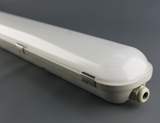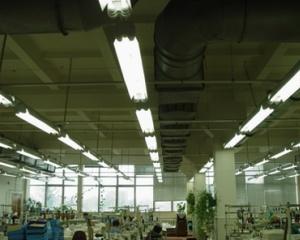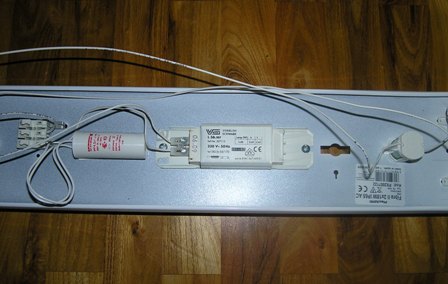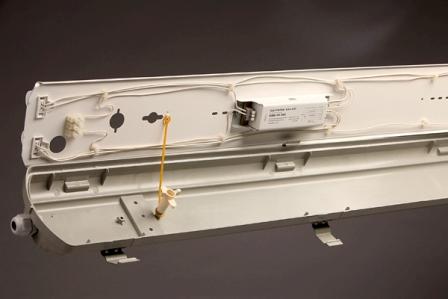Features of the repair of fluorescent lamps
 Fluorescent lights are quite common these days. They are often used to illuminate premises for various purposes, from offices to industrial premises of industrial enterprises. These lighting fixtures have gained widespread use due to their many advantages over conventional incandescent lamps.
Fluorescent lights are quite common these days. They are often used to illuminate premises for various purposes, from offices to industrial premises of industrial enterprises. These lighting fixtures have gained widespread use due to their many advantages over conventional incandescent lamps.
But these lamps have a significant drawback — low reliability. This is due to the fact that one lamp is not enough to make the light fixture work; its design contains auxiliary elements, which also somewhat complicates its work, especially repair. Consider the features of the repair of fluorescent lamps.
To detect the malfunction of the lamp, you need to know its principle of operation. Structurally, the lighting fixture, in addition to the lamp, has auxiliary elements designed to start and operate the lamp — starter and gas, the so-called ballast equipment (PRA).

The starter is a neon lamp with two (rarely one) bimetallic electrodes.When voltage is applied to the fluorescent lamp, a discharge is formed in the starter, which contributes to the closing of the initially open electrodes of the starter. At the same time, a large current flows in the circuit, which heats the gas gap in the fluorescent lamp bulb, as well as the bimetallic starter electrodes themselves.
At the moment when the electrodes of the starter open, a voltage surge occurs, which provides the choke. Under the influence of increased voltage, the gas gap in the lamp breaks and it lights up. The choke is connected in series with the lamp, so that the 220 V supply voltage is divided into 110 V per lamp and choke, respectively.
The starter is connected in parallel to the lamp, respectively, when the lamp is working, lamp voltage is supplied to it. This voltage value is not sufficient to reclose the starter electrodes, that is, it participates in the circuit only at the moment of turning on the fluorescent lamp.
The choke, in addition to generating a pulse with increased voltage, limits the current when the lamp is turned on (when the starter contacts are closed), and also provides a stable discharge in the lamp during its operation.

When repairing a fluorescent lamp, you must first remember the safety measures. Before proceeding with the replacement or inspection of the elements of the light fixture, it is necessary to turn it off completely and make sure that the electric current does not suit it.
Let's go directly to the consideration of the reasons why the fluorescent lamp may not work.
The fluorescent light fixture, unlike conventional base lamps, has a large number of contact connections.Therefore, one of the reasons for the malfunction of the lighting fixture may be the lack of contact in one or another part of the lighting fixture.
That is, before concluding that one of the elements of the lighting fixture is defective, it is necessary to make sure that the contacts are reliable and, if necessary, solve this problem by tightening the screw connections, as well as cleaning and tightening the plug- in contacts.
In this case, it is necessary to check the reliability of the contact in the socket of the non-working lamp, the starter, the choke terminals, as well as the terminals to which the power wires of the lamp are connected. The contacts can be checked visually, but if further troubleshooting of the light fixture does not give results, then you should return to checking the contact connections, but with a tester, dialing each of the contacts.
If the contacts are in good condition, the fluorescent lamp itself should be checked for integrity. To do this, remove it from the cartridge and insert it into a known working fluorescent lamp. If the lamp does not light up, it must be replaced. But you need to take into account the fact that it can burn out due to a malfunction of the choke, therefore, before putting a new lamp in an idle lamp, you need to make sure that the lamp choke is working.
The next reason for the malfunction of the lighting fixture is a faulty starter. A malfunction of the starter can be manifested either by the complete inoperability of the lamp or by its characteristic flickering.
If the starter contacts are not closed when the lamp is on, there will be no indication of lamp operation.Or vice versa, the contacts of the starter are closed and do not open - in this case, the lamp will blink, but will not light up. If the starter is removed, it will operate normally. In both cases, the repair is reduced to replacing the starter.
Another cause is defective gas. A characteristic sign of a malfunction of the choke can be a partial violation of the integrity of the insulation of its winding, which is manifested by a sharp change in its characteristics (current at the time of starting the lamp and during its operation). Visually, this can be seen from the unstable operation of the lamp after it is turned on. In this case, the lamp is turned on in normal mode, but during its operation there is a flicker, unevenness of the glow, uncharacteristic of its normal operation.
As mentioned above, the lamp can burn out due to a malfunction of the choke, namely the presence of an intermittent short circuit in it. If a characteristic burning smell appears when the lamp burns out, then most likely the choke is damaged.
When installing a new starter or choke, it is necessary to pay attention to their nominal voltage and power, the values of these parameters must correspond to the previously installed elements.
You should also pay special attention to the mains voltage and its stability. Unstable and over voltage / low voltage is the main cause of ballast failure, lamp burnout or unstable operation of the fixture. If the problem of poor power supply is not solved, then the fluorescent lamp will often fail.

